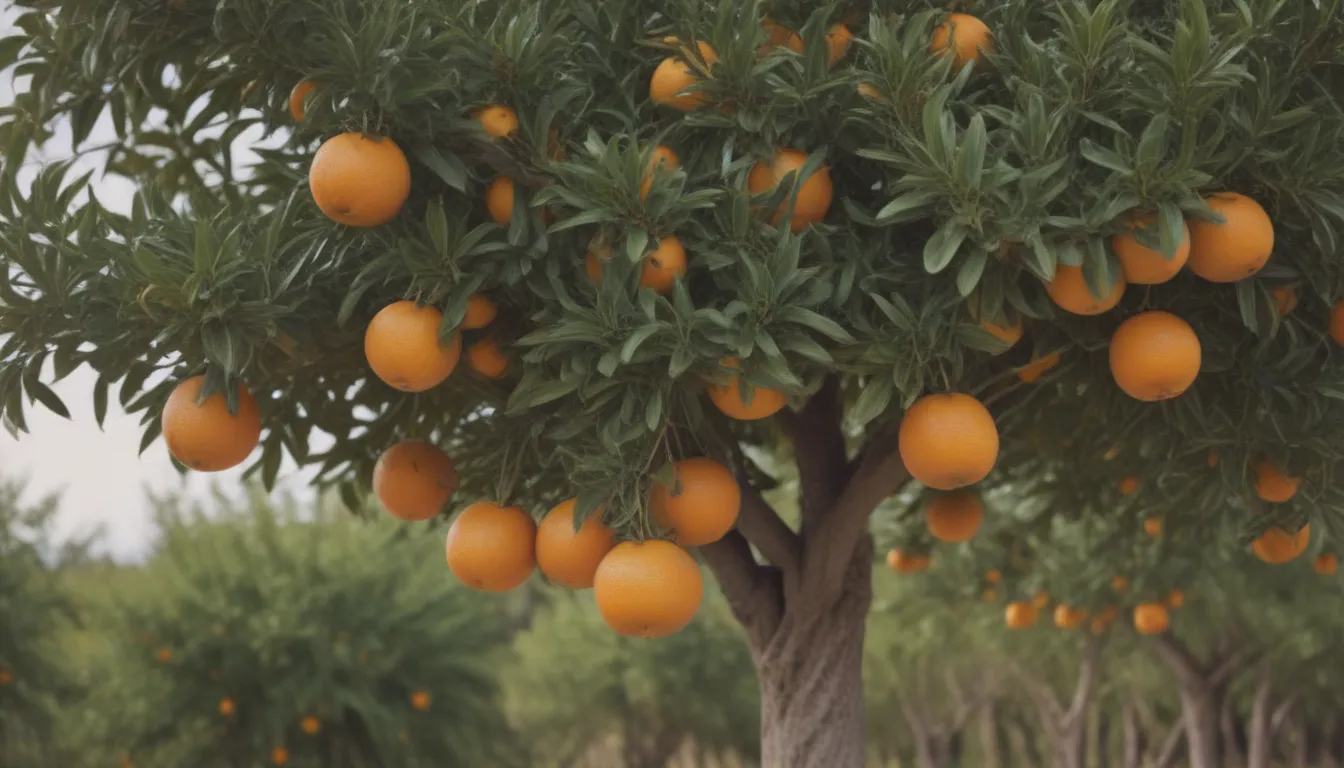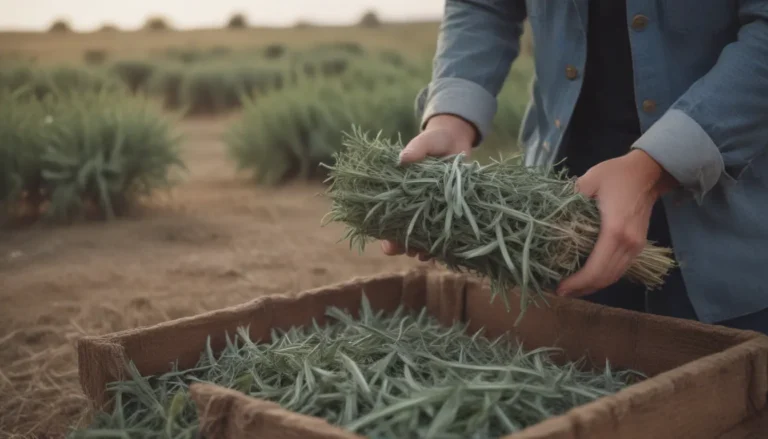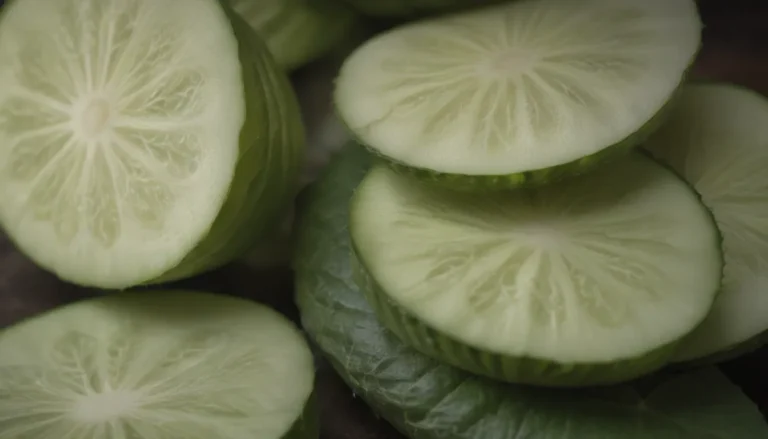The Complete Guide to Growing and Caring for Orange Trees

Welcome to our comprehensive guide on how to grow and care for orange trees! Orange trees are not only beautiful with their full, leafy canopies and fragrant flowers but also produce delicious fruit during the growing season. Whether you are a seasoned gardener or just starting out, this guide will provide you with all the information you need to successfully grow and care for your very own orange tree.
Getting to Know Orange Trees
Orange trees are a popular citrus tree known for their white blooms that appear in the summer followed by their famous fruit. They can grow up to 32 feet tall, with dwarf varieties reaching about 12 feet in height. The great news is that orange trees can be kept even smaller when planted in containers, making them perfect for indoor gardening as well. And while they thrive in warm climates like southern Florida, with some proper care, you can successfully grow them in cooler climates too.
Orange Tree Care
Taking care of your orange tree is crucial for optimal growth and fruit production. Here are some essential care tips to keep your tree healthy and thriving:
Light
Orange trees require plenty of sunshine to produce the best-tasting fruits. Make sure to choose a spot that receives full sun for at least eight hours a day. For dwarf varieties grown indoors, place them in a sunny window to ensure they get enough sunlight.
Soil
Orange trees thrive in loamy, rich, well-draining soil. It is essential that excess water drains away, as orange trees cannot tolerate heavy, wet soil. When planting your tree, consider mixing in potting soil for additional nutrients. Aim for a slightly acidic to neutral soil pH level ranging from 6.0 to 7.0 for optimal growth.
Water
Consistent watering is key for orange trees, but be sure not to let the soil become soggy. Established orange trees typically do best with about 1 inch of water per week, but adjust based on rainfall levels in your area. Improving drainage by building up a small mound at the bottom of the planting hole can help prevent waterlogging.
Temperature and Humidity
Orange trees thrive in subtropical regions with warm temperatures and moderate humidity levels. They can be grown outdoors in USDA hardiness zones 9 to 11 and tend to go dormant when temperatures drop below 50 degrees Fahrenheit. Make sure to provide protection during cold spells, especially for less cold-hardy varieties like naval oranges.
Fertilizer
Proper fertilization is essential for the healthy growth of your orange tree. For trees grown in cooler areas, fertilize every month or two during the growing season. In warmer zones, such as 10 and 11, consider fertilizing year-round to encourage continual growth and fruit production. Use a well-balanced fertilizer or one specifically designed for citrus trees for best results.
Types of Orange Trees
There are several popular types of orange trees that you can choose from based on your preferences and growing conditions. Here are some common varieties:
- Navel Orange
- Blood Orange
- Valencia Orange
- Satsuma Orange
Each variety offers its unique flavor profile and fruit characteristics, so feel free to explore different options to find the perfect orange tree for your garden.
Harvesting Oranges
Harvesting oranges can be a rewarding experience, but it’s essential to know when and how to pick them for optimal flavor. Different varieties of oranges have varying harvesting times, so make sure to research the specific timeline for your tree. Look for fruit that is bright, consistent in color, firm with a slight give, and fragrant when determining if they are ripe and ready to be picked. Store harvested oranges in the refrigerator to extend their shelf life.
Pruning and Propagating Orange Trees
Pruning and propagating your orange tree are essential tasks to ensure its health and productivity. Follow these tips to keep your tree in top condition:
- Pruning: Prune your orange tree after fruit harvest to promote the following season’s crop. Remove dead or damaged branches and those that cross each other. For young trees, trim branches that are less than a foot above the ground.
- Propagating: Orange trees can be propagated through cuttings in late spring or early summer. This process requires a few essential tools like snips, rooting hormone, and a pot with well-draining soil. Take your time to create new orange trees from existing ones and expand your orchard.
Growing Orange Trees from Seed and in Pots
If you’re interested in starting your orange tree from seed or planting it in a pot, here are some key steps to follow:
- Growing from Seed: While starting from seed can be exciting, keep in mind that seeds may not produce trees with the same characteristics as their parent plant. Plan to start your tree from seed in a bowl of water and transfer it to a pot with rich potting soil to encourage growth.
- Potting and Repotting: Dwarf orange trees are popular for container gardening. Choose a deep pot with proper drainage holes and repot your tree every two to four years as needed. Ensure your tree has enough room to grow and thrive in a new container.
Overwintering and Common Pests/Diseases
As winter approaches, make sure to prepare your orange tree for the colder months by following these essential tips:
- Overwintering: In their appropriate growing zones, orange trees require minimal care during the winter. Remove leftover fruit, reduce watering, and consider insulating the tree with frost cloths if needed. For trees grown outside their zones, move them indoors before heavy frost arrives.
- Pests and Diseases: Keep an eye out for common pests like aphids, scale, and spider mites that can affect your orange tree. Additionally, be aware of fungal and bacterial diseases such as citrus canker and root rot. Regular monitoring and early intervention can help protect your tree from these threats.
Troubleshooting Common Issues with Orange Trees
Orange trees can face various problems, but with proper care and attention, you can mitigate these issues effectively. Here are some common problems and their solutions:
- Yellowing Leaves: Yellowing leaves may indicate a lack of nitrogen, root rot, or citrus greening. Control pests like psyllids with neem oil and adjust watering to prevent root rot.
- Blistering Leaves: Small blistering spots on leaves may signal citrus canker. Use copper fungicides to combat this issue and protect your tree.
- Excessive Fruit Drop: Stress-induced factors like oversaturation with water can lead to excessive fruit drop in mature orange trees. Address the underlying cause to prevent further damage.
- Fruit Splitting: Hot, humid weather or rapid changes in watering can cause fruit splitting in orange trees. Maintain consistent watering practices to avoid this issue.
By understanding and addressing these common problems, you can ensure a healthy and productive orange tree in your garden.
Achieving Blooms and Caring for Your Orange Tree
To encourage blooming and maintain the health of your orange tree, focus on providing the right conditions and care practices:
- Blooming: Orange trees bloom once a year in the spring, producing delicate white blossoms that eventually turn into sweetly fragrant flowers. Ensure proper fertilization and adequate sunlight to promote optimal blooming.
- Care Tips: Regularly monitor your tree for signs of problems like pests or diseases. Address issues promptly and provide consistent care to help your orange tree thrive.
Conclusion
Orange trees are a delightful addition to any garden, offering not only beautiful aesthetics but also tasty fruits to enjoy. By following the tips and guidelines outlined in this comprehensive guide, you can successfully grow and care for your orange tree, from planting to harvesting and beyond. Remember to provide ample sunlight, well-draining soil, and proper care to ensure the health and productivity of your tree. With a little patience and dedication, you’ll be rewarded with delicious oranges for years to come. Happy gardening!





